SOME ASPECTS OF SLAVERY IN POST MEDIEVAL CEYLON AND THE ROLE OF SIR ALEXANDER JOHNSTON IN ITS ABOLITION – By HUGH KARUNANAYAKE
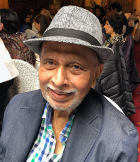 Although slavery in Ceylon flourished during the occupation of the maritime provinces by the Portuguese and Dutch,it seemed that slavery existed as an acceptable practice, even during pre colonial days, and that, despite the practice going against the core principles of the country’s main religion, Buddhism. It was of course a global phenomenon in an age where “might was right” and no one to espouse the cause of the underprivileged and those in need.
Although slavery in Ceylon flourished during the occupation of the maritime provinces by the Portuguese and Dutch,it seemed that slavery existed as an acceptable practice, even during pre colonial days, and that, despite the practice going against the core principles of the country’s main religion, Buddhism. It was of course a global phenomenon in an age where “might was right” and no one to espouse the cause of the underprivileged and those in need.
It could be stated with some certainty that slavery thrived before the advent of mercantilism. In other words , investment in human capital was a sine qua non in an era where commercialism was yet to raise its head. Even in mediaval Europe, people with means owned slaves, traded in slaves, and even enslaved people of European descent as well as non -Europeans . Slaves were used for agricultural and artisanal labour as well as domestic, sexual, reproductive as well as military services. Slavery as a practice reached a climax with the discovery of the East and South of the globe when the newly discovered countries were seen as the main source of the supply chain of slaves. What is known today ethnographically as “Black America” and also the West indies owe their existence to their founding fathers, who were the pioneering slaves imported in to the new world. It is on record that hundreds of thousands of slaves were imported from Africa. Slavery as a most abhorrent practice was stirring the conscience of communities in America and England to the point that literary works such as “Uncle Tom’s Cabin” began to prick the concience of the broader community.Racial discrimination against people of darker skin pigmentation was at the time,not only accepted as a social norm but legislatively protected as well.
While there is some evidence of slavery existing in Sri Lanka from ancient times, it seems to have been confined to the king’s household and possibly to members of the nobility, and do not seem to be a widespread feature. The founding Professor of Sociology in the University of Ceylon Prof Bryce Ryan in his work entitled “ Caste in Modern Ceylon” stated that “ of slavery
in ancient Ceylon and through most of the colonial period, there is ample evidence, but it was not a product of conquest except in so far as Indian slaves were introduced, and it was an institution coincidental to caste.” Further research seem to underscore the fact that enslavement was a feature of the caste system prevalent in the north and east of Ceylon. Colonial rule has also seemed to serve as a base for enslavement as a practice in the north of Ceylon. The Portuguese rule in Jaffna lasted for forty years and was charecterised by high taxation and violence against the people in order to continue in control. Many temples in the peninsula were razed to the ground and many forced to convert to Roman Catholicism. The Nallur library was razed to the ground as if to assert the conqueror’s power; an act to be repeated centuries later in Jaffna,by conquistadors from the South !
Sri Lanka had by the time of British rule, gradually recognised slavery as a social norm. it was left to inspired individuals to take up the cause against slavery with vigour. A key crusader against slavery in Ceylon was Sir Alexander Johnston, the country’s third Chief Justice. Sir Alexander was a man before his time. It was he who with the best of intentions accompanied two Buddhist monks to England ostensibly with the aim of broadening their intellectual horizons. However he entrusted them to the care of Rev Adam Clarke who converted the two monks Ven Muni Ratne and Dharmaratne to the Christian faith and they returned to the island converted to Christianity.
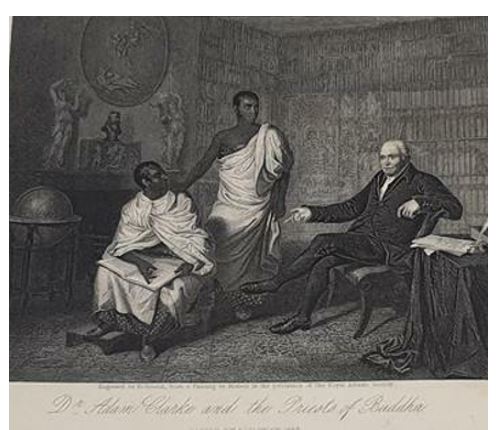
Dr Adam Clarke with the two monks.
The protestant ethic had in the meantime gained great ground in the occident, and its conscience was stirred. It was difficult to reconcile the gospel of Christ with the human bondage that was slavery. Anti slavery movements began to appear in the early 19 th century. Many books, pamphlets were written and published, oratory against slavery was the favoured flavour of the time. It was against this backdrop that Sir Aexander Johnston the third Chief Justice of Ceylon took office.
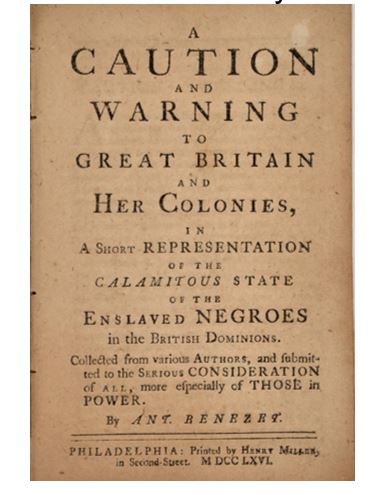
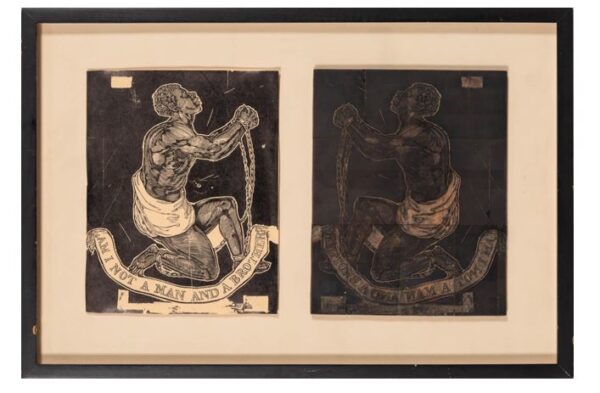
(Above) TWO EXAMPLES OF ANTI SLAVERY MATERIAL
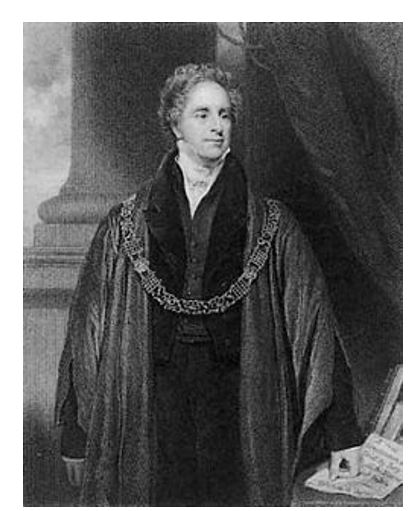 SIR ALEXANDER JOHNSTON
SIR ALEXANDER JOHNSTON
The person to whom the country owes much in terms of the social reforms initiated during the early British period, is none other than Sir Alexanderr Johnston. Johnston was responsible for bringing the Mahavamsa, Sri Lanka’s historical epic, to European attention when he sent manuscripts of it and other Sinhala chronicles to Europe for publication during his tenure as Chief Justice. Johnston encouraged the translation of the Mahavamsa and other works in order to bring British colonial law into alignment with local traditions and values. The reforms that Sir Alexander Johnston made included universal public education, freedom of religious practice, abolishment of slavery, employment of natives in government, and the codification of laws including the traditional views of Hindus, Muslims, and Buddhists.He was indeed a pioneer social reformer whose impact was felt even during the centuries that followed. The Dictionary of National Biography refers to Sir Alexander thus : Under his impulse Ceylon now led the vanguard of Indian reform. A system of universal popular education was set on foot, religious liberty was established, and the owners of slaves were led to agree to their complete emancipation; public employment was largely opened to the natives and half-castes, while Europeans were permitted to acquire land; trial by jury was established, and a considerable advance was made in the preparation of a code of law, in which provision was made for the due preservation of the views and usages of Hindus, Muhamadans, and Buddhists
Sir Alexander Johnston as Chief Justice introduced the jury system to Ceylon as a key component of judicial administration. Being aware of the various ethnic, caste and religious groups that formed the population of the country, he took great care to ensure that jurors represented the broader community.
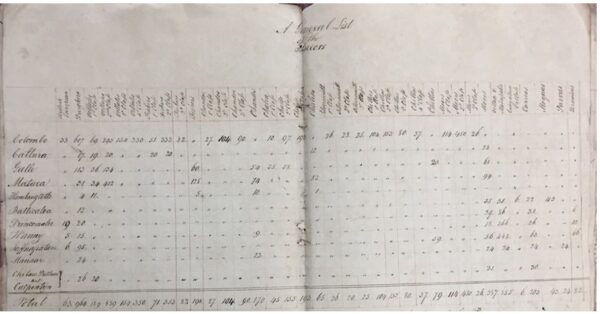
Table depicting ethnic /caste composition of jurors in 1812
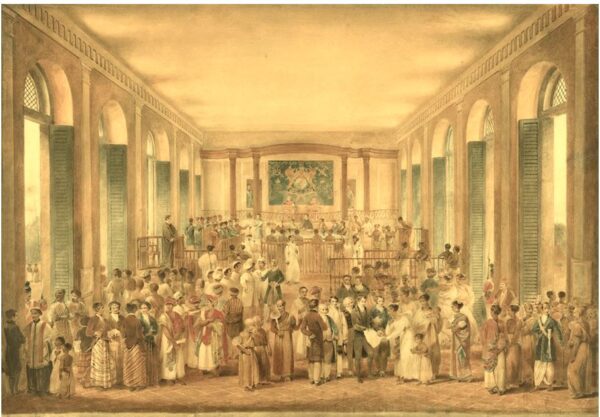
Jurors at the Supteme Court Watercolour by James Stephanoff 1818/19.
EMANCIPATION OF CHILDREN BORN TO SLAVES
On the 10 of July 1816, Sir Alexander Johnson wrote to the Dutch gentlemen belonging to the Special Jury stating inter alia “many of you are aware of the measure I proposed in 1806 to the principal proprietors of slaves in the island, and of the reason for which its adoption at that time was postponed. Allow me to avail myself of the present opportunity to suggest to you, that should those proprietors, in consequence of the change which has since taken place in the circumstances of this island,now think that such a measure is advisable,they will. By carrying it into effect,set a bright example to their countrymen, and show themselves worthy of being ranked amongst the benefactors of the human race.”
Sir Alexander’s proposal was to grant freedom to all chidren born of slaves in bondage. Needless to say the Dutch members of the Special Jury responded magnificently with a unanimous resolution that “ all chidren who may be born of slaves from and after the 12 August 1816(inclusive) shall be considered free.”
Jurors from other communities including Sinhalese, Malabars, Mohameddans, Chitties, and Burghers following the lead given by the Dutch, also unanimouslty resolved that all children born of slaves from and after 12 August 1816 were considered free. There were some mumblings about reparations, but not strong enough to capture Vice Regal attention. That was an age where outward manifestations of a family’s wealth was judged by the number of slaves owned. The die was cast for the future emancipation of all slaves in the island which took place in 1833. The Census oof 1911 records that provision was made for compensation to owners of 15 000 slaves during the last decade of the nineteenth century.
Sir Alexander Johnston is little remembered today in a country whose people benefitted immensely from his humanitarian and benevolent dispensations. A small compensatory appreciation of his work could however be seen in the descendants of Ven Dharmaratne some of whom live in various parts of the world today, including Sri Lanka, under the assumed family name of Alexander!







